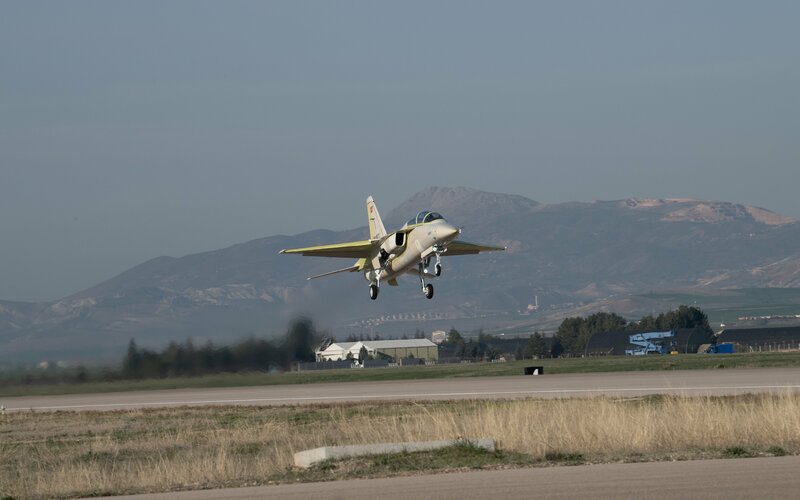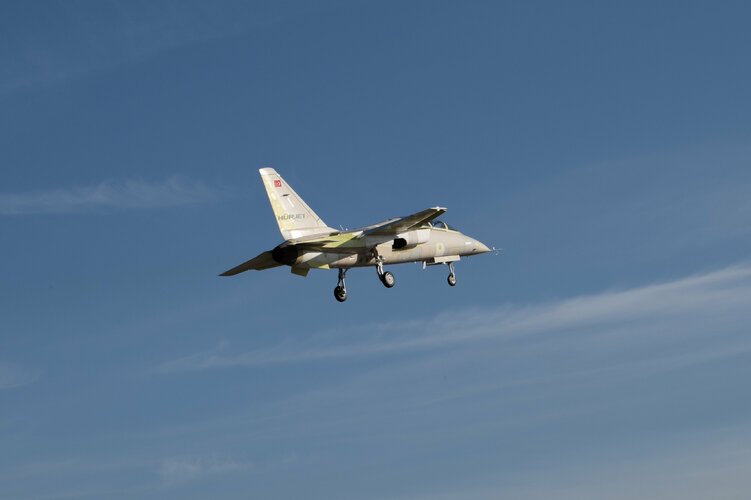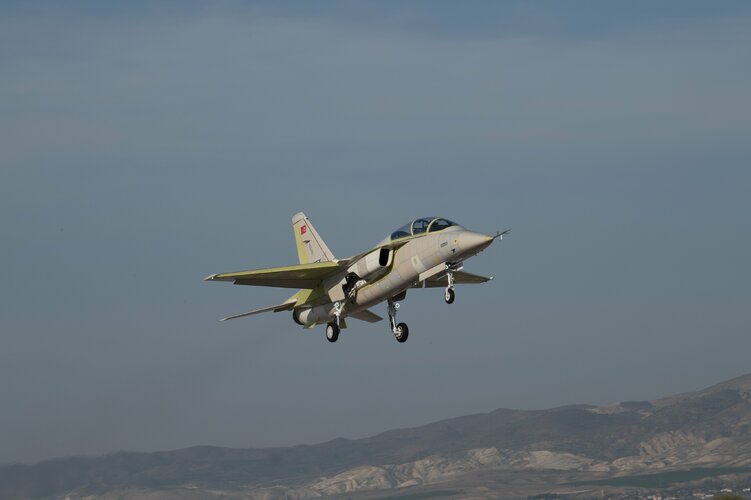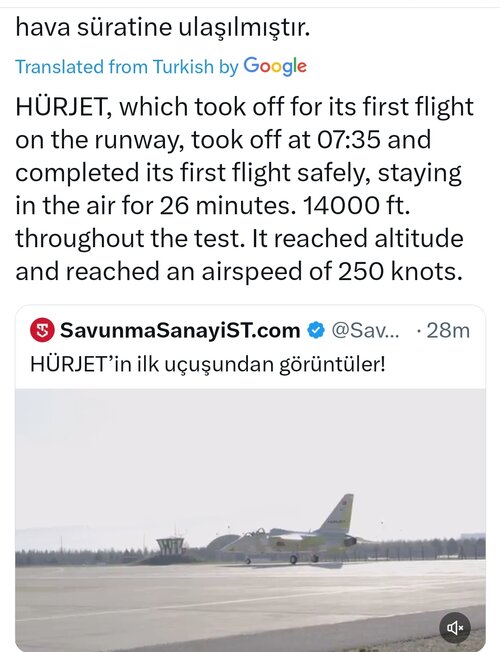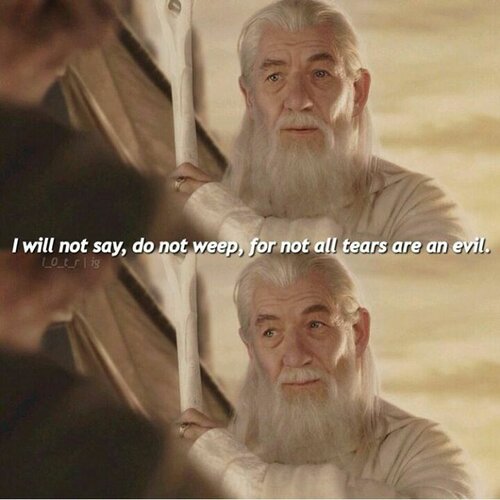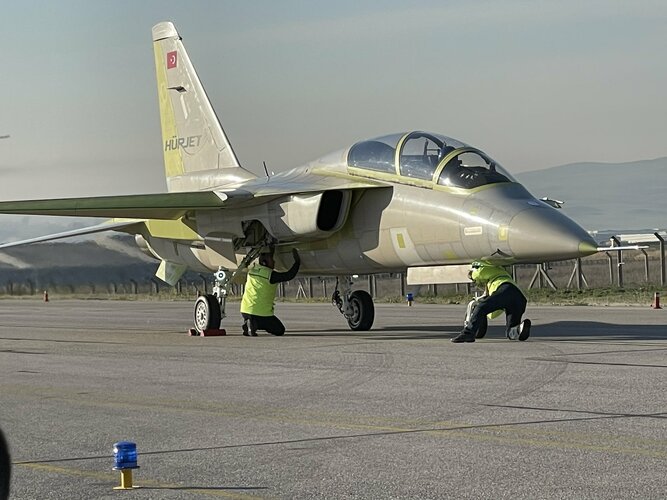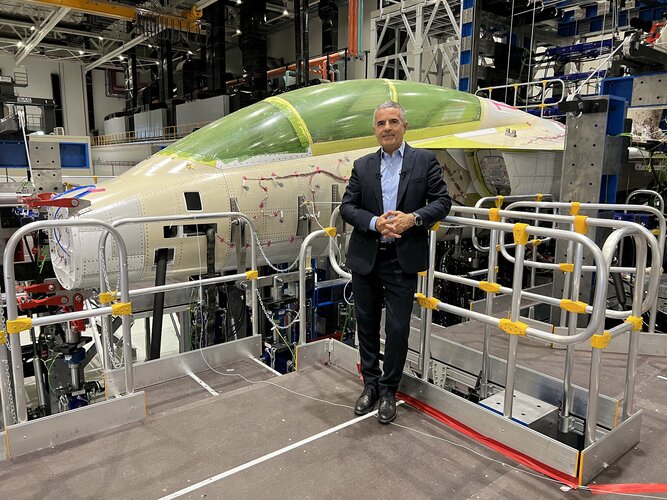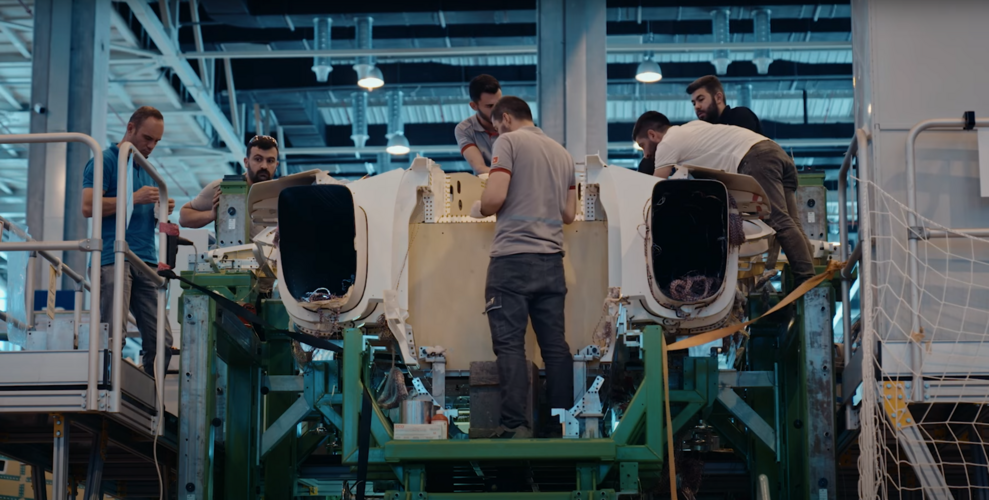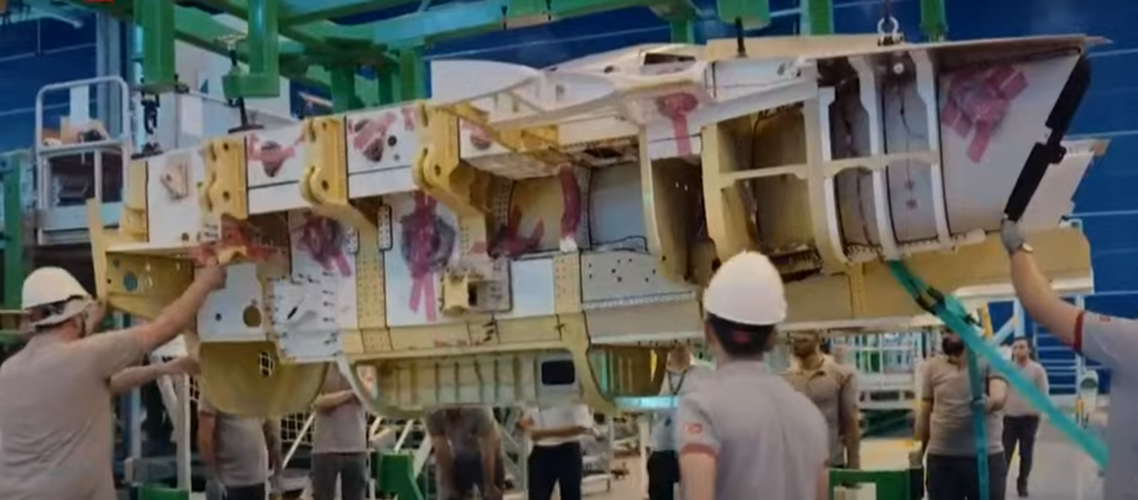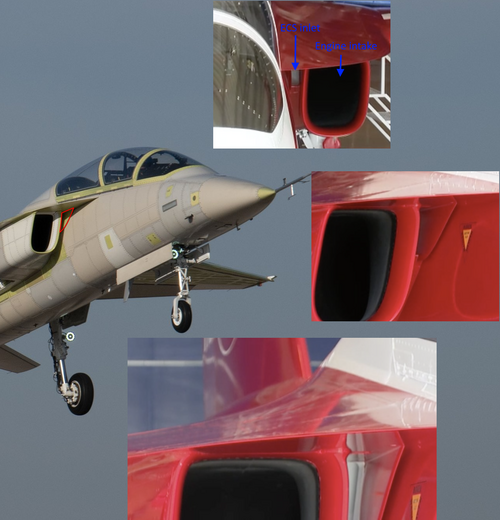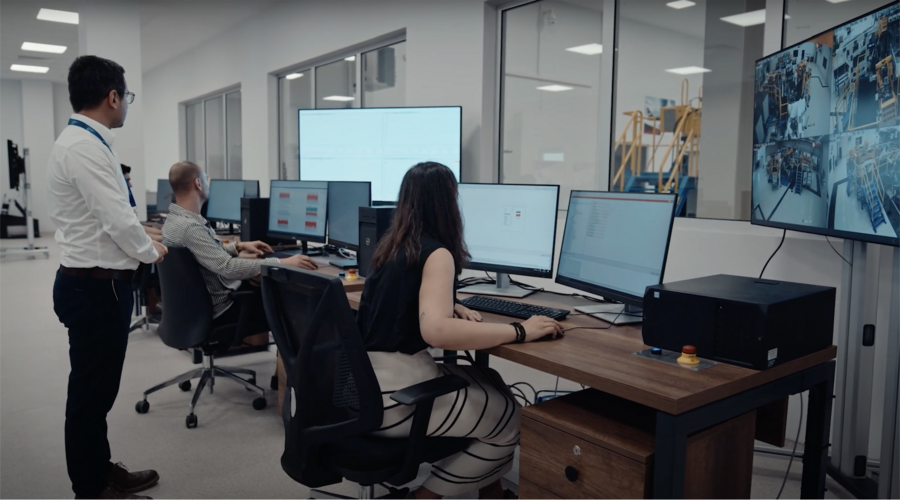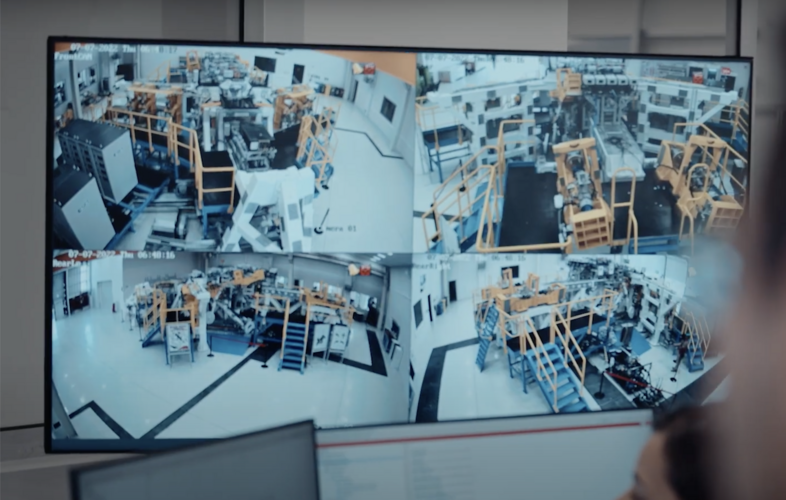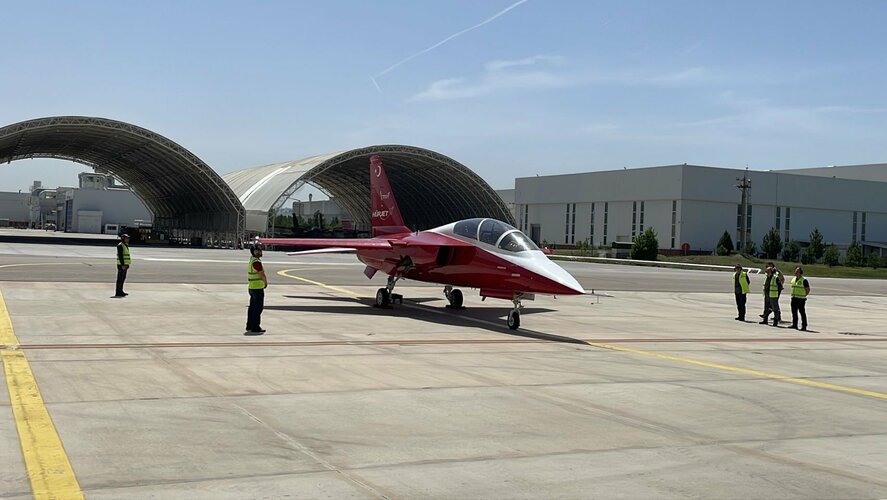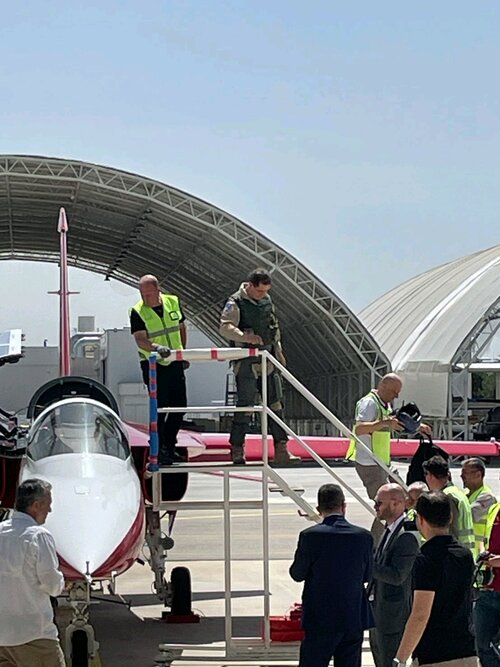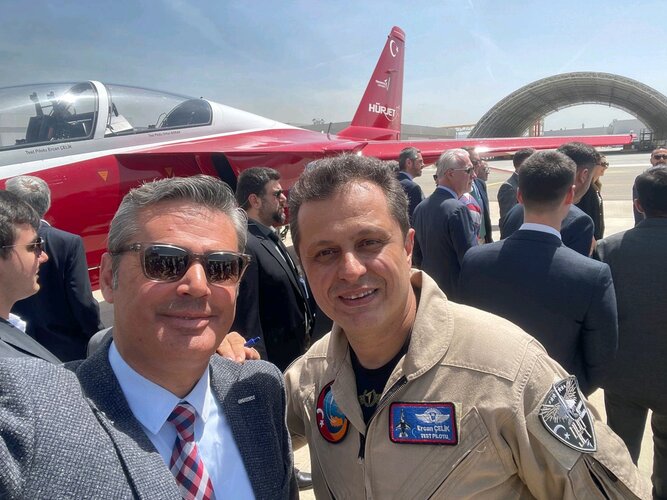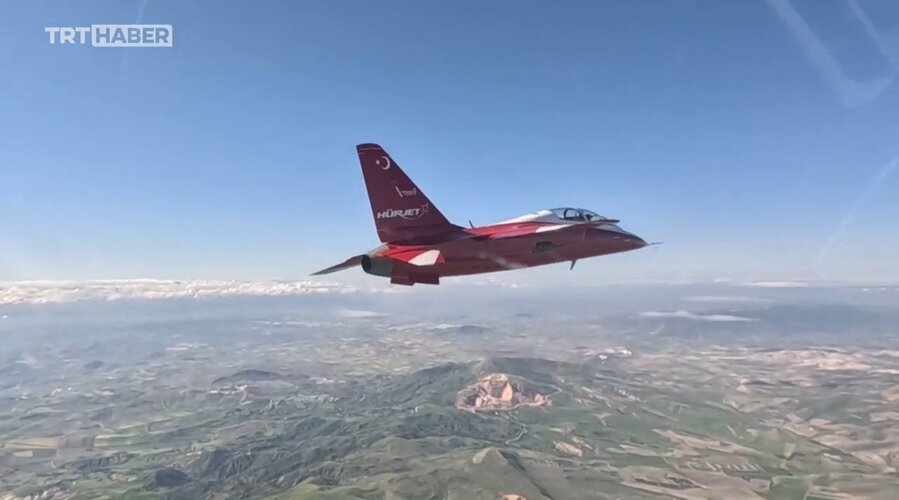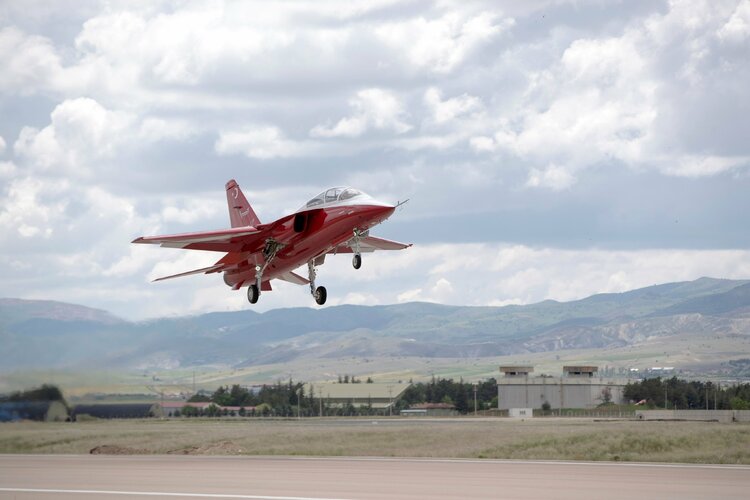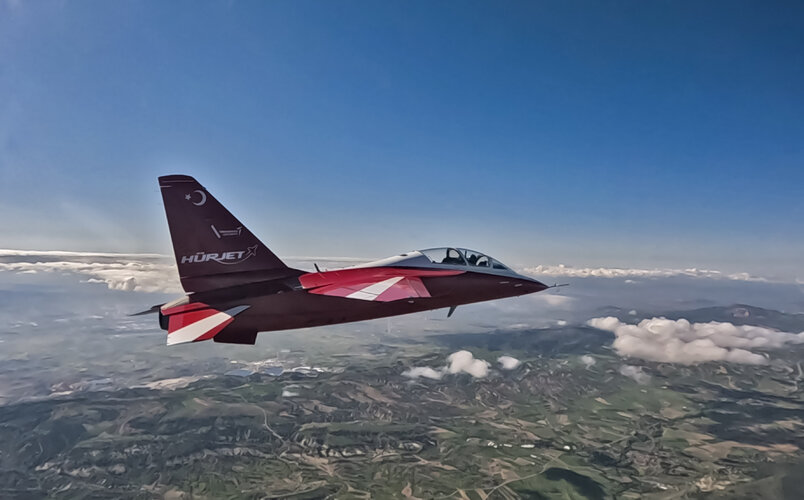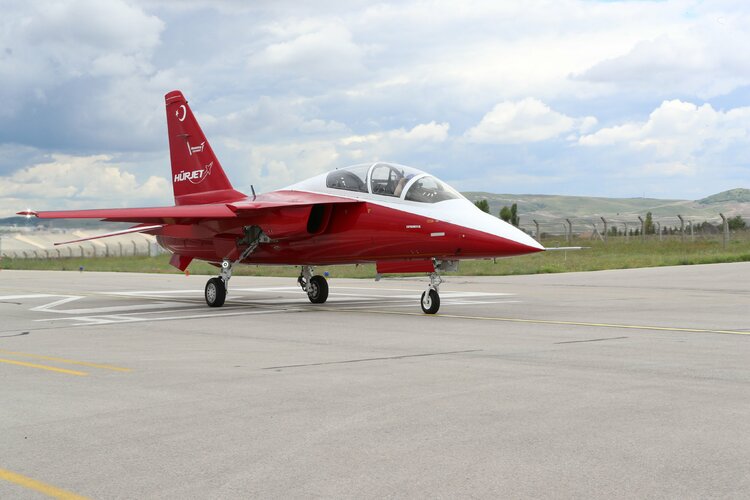If I'm being optimistic, the fleet should consist Hürjet's, Kızılelma's (depends on how the Air Force Command is planning on operating them), ANKA-3's and TF-X's. If Turkey manages to get mod kits from the US then a couple of Vipers, a handful of F-16 Özgür's and some other F-16 types until they are no longer airworthy probablyawesome!! looking good.
is the future Turkish AF fleet going to focus on just Hurjet, Falcons and TFX?
You are using an out of date browser. It may not display this or other websites correctly.
You should upgrade or use an alternative browser.
You should upgrade or use an alternative browser.
TAI HURJET
- Thread starter ocay
- Start date
Radonislav
ACCESS: Confidential
- Joined
- 16 November 2022
- Messages
- 117
- Reaction score
- 166
And unmanned stuff (like KE and Anka-3/4)awesome!! looking good.
is the future Turkish AF fleet going to focus on just Hurjet, Falcons and TFX?
- Joined
- 29 November 2010
- Messages
- 1,703
- Reaction score
- 3,212
there's now a lot of variety in the supersonic trainer/light fighter-attack aircraft now
Golden Eagle, Hurjet, T-7 and the Master.
has any countries expressed interest in it yet?
I could see it being a viable option for countries where the US would like to sell to, but can't for a variety of reasons.
like Central Asia, maybe Argentina
Golden Eagle, Hurjet, T-7 and the Master.
has any countries expressed interest in it yet?
I could see it being a viable option for countries where the US would like to sell to, but can't for a variety of reasons.
like Central Asia, maybe Argentina
- Joined
- 2 January 2006
- Messages
- 3,524
- Reaction score
- 3,121
Last edited:
Thanks DeinoWow and congratulation again!
snne
ACCESS: Top Secret
- Joined
- 3 July 2022
- Messages
- 576
- Reaction score
- 1,546
Combat-Master
ACCESS: Top Secret
- Joined
- 15 July 2020
- Messages
- 1,104
- Reaction score
- 2,860
Resembled a mini f-16 from the rear with those air brakes

View: https://twitter.com/GE_Aerospace/status/1650884893679706113?s=20
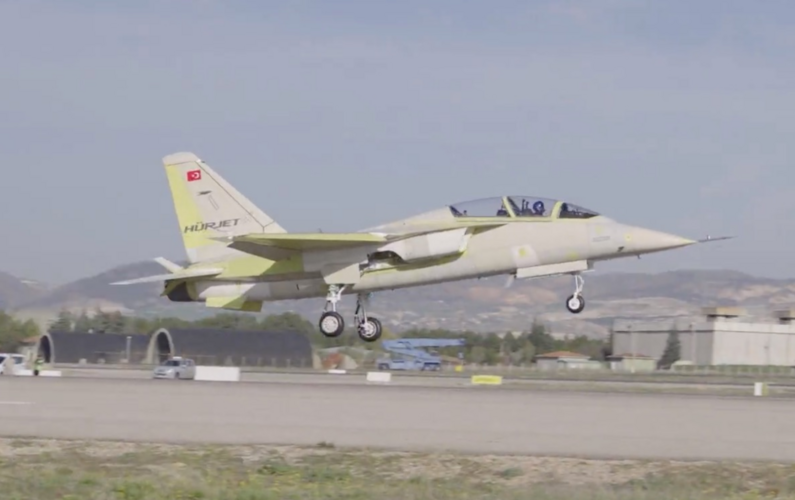
View: https://twitter.com/GE_Aerospace/status/1650884893679706113?s=20
snne
ACCESS: Top Secret
- Joined
- 3 July 2022
- Messages
- 576
- Reaction score
- 1,546
Can't, both the seat and the HUD come from UK.there's now a lot of variety in the supersonic trainer/light fighter-attack aircraft now
Golden Eagle, Hurjet, T-7 and the Master.
has any countries expressed interest in it yet?
I could see it being a viable option for countries where the US would like to sell to, but can't for a variety of reasons.
like Central Asia, maybe Argentina
TAI Hürjet's documentary will also be released soon.
View: https://twitter.com/TUSAS_TR/status/1656721173810380804?s=20
View: https://twitter.com/TUSAS_TR/status/1656721173810380804?s=20
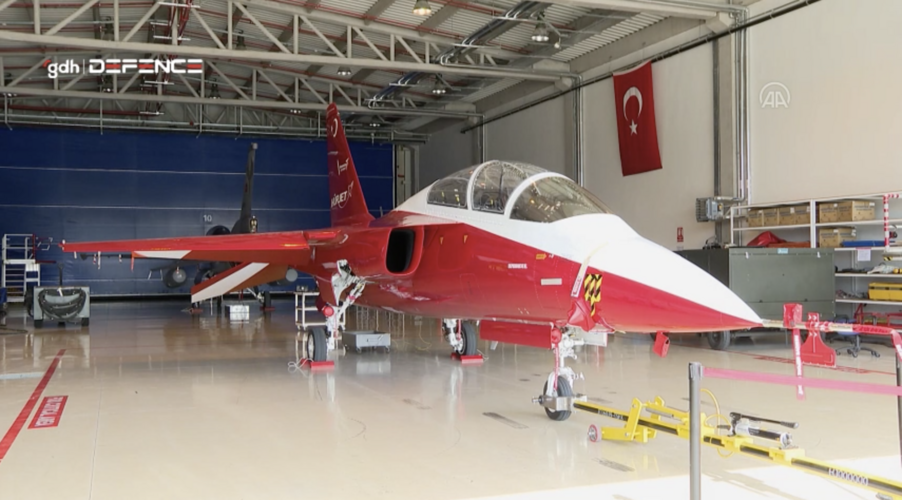
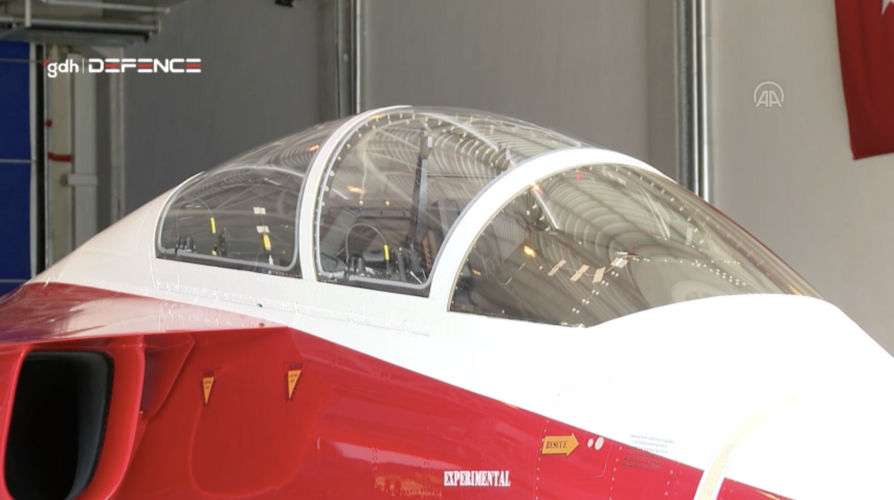
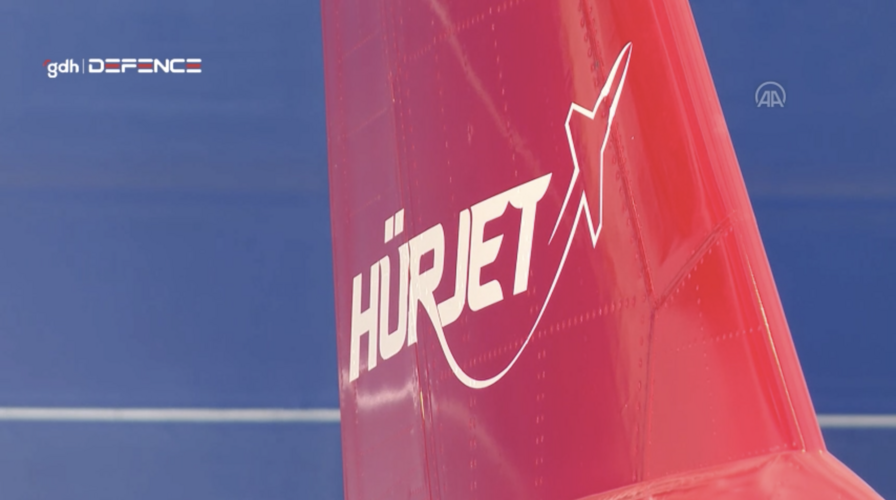
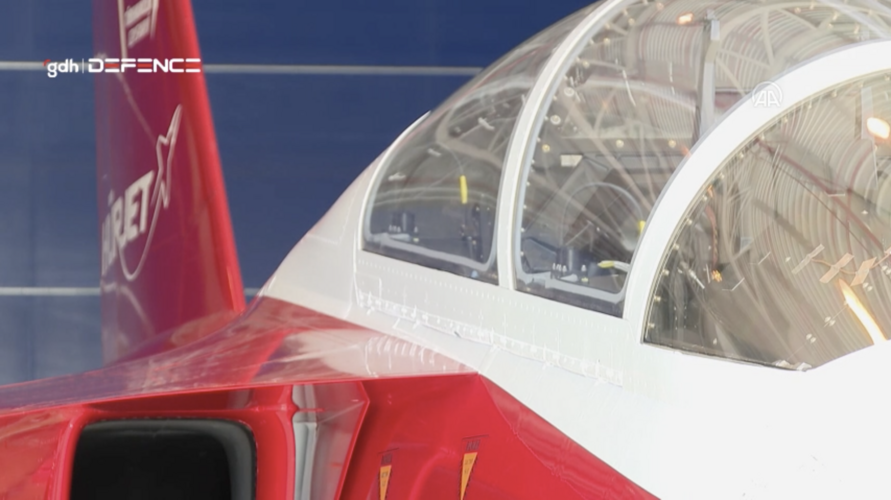
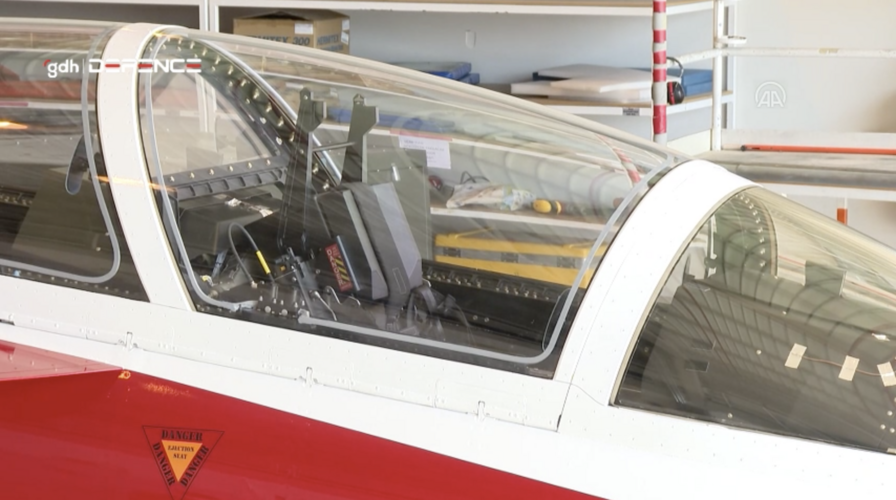
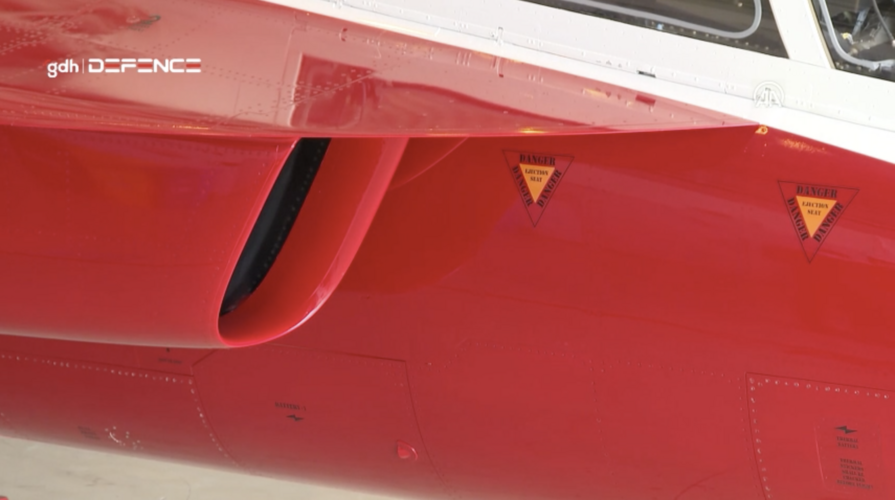
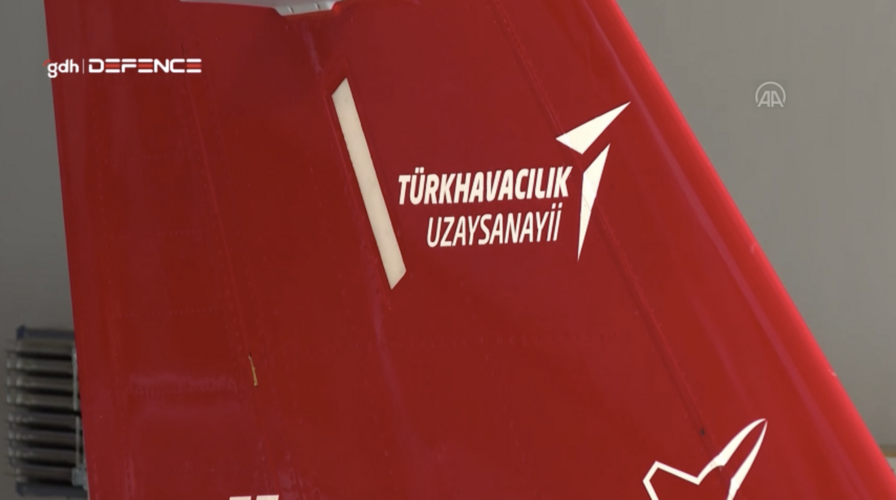
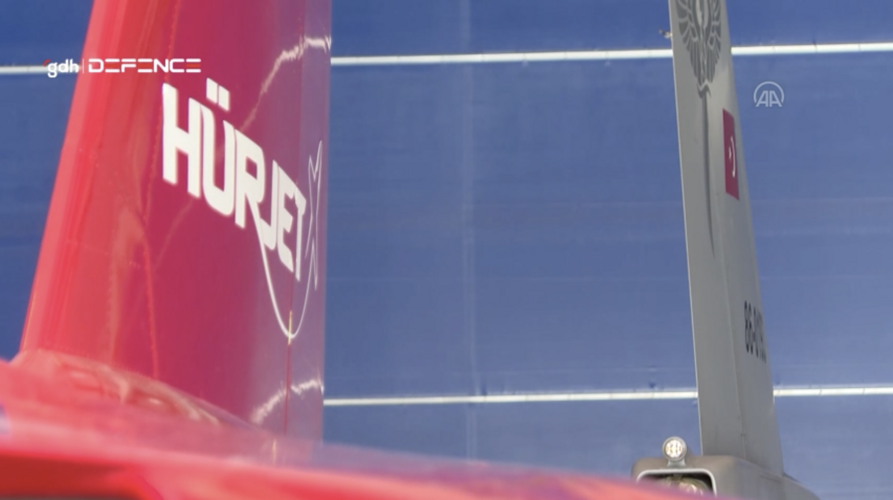
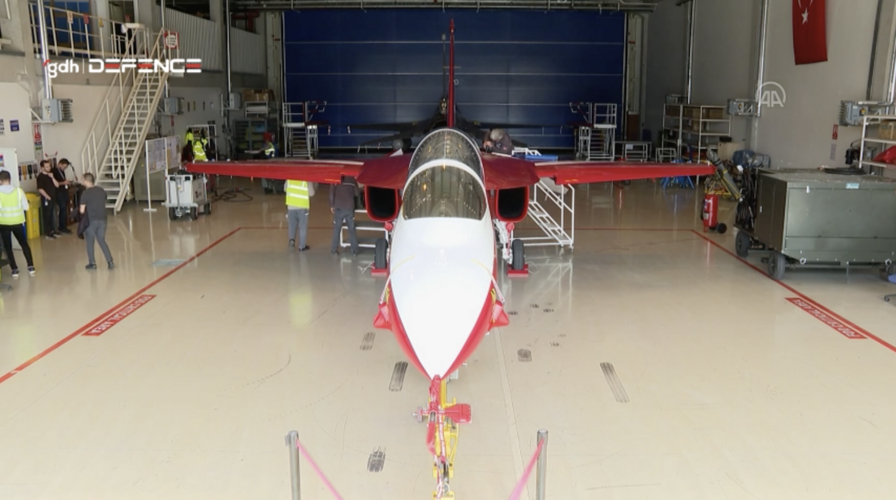
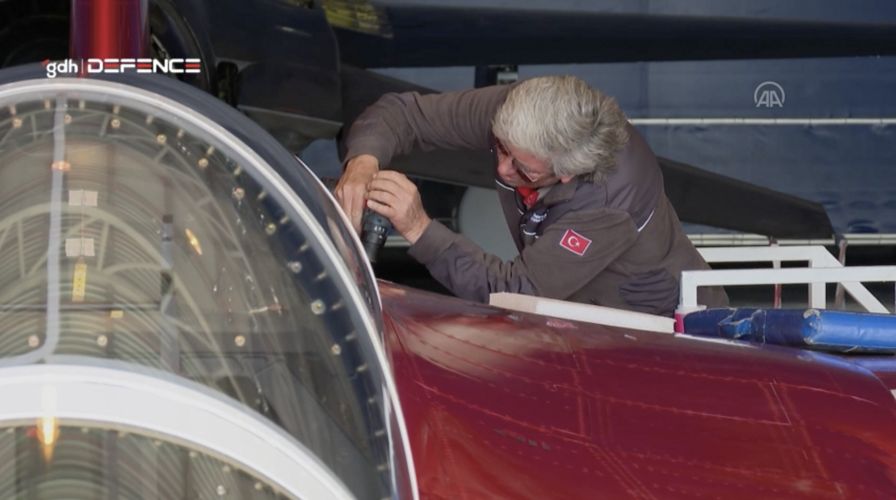
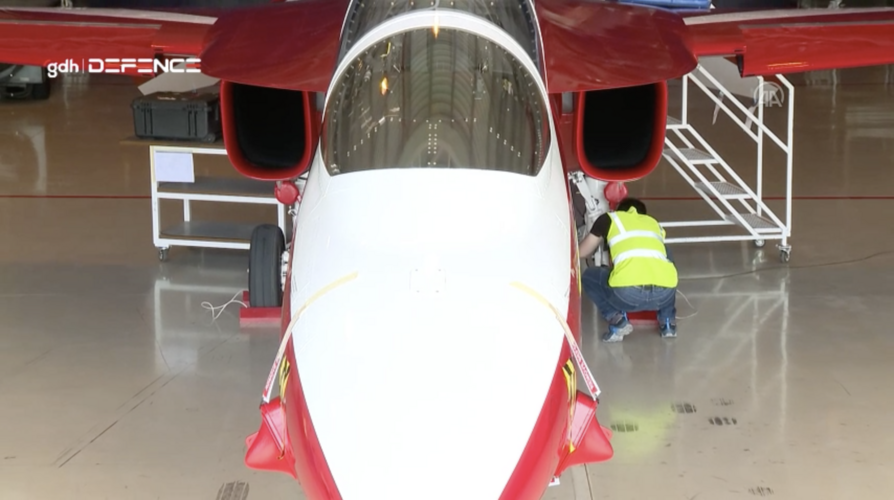
Integrated Product Manager of HÜRJET Propulsion Systems Şahika Saç
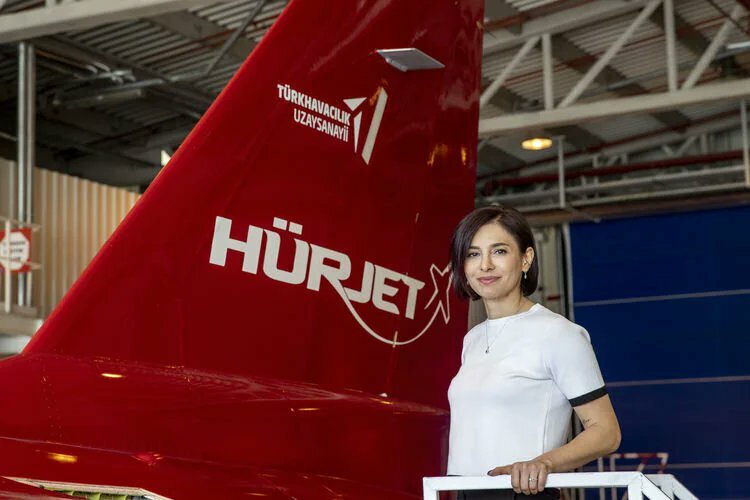
-One of the most important tests of HURJET is the first power-up test. In these tests, we test the correct operation of the electrical systems. There are engine start tests that follow. It was also a very important stage for our team. We did the engine integration and the first engine start test with this work.
The process of working in harmony with all sub-systems continued. Before the first flight, you need to make sure that all systems are working correctly, are fully integrated with each other, and that you do not see any errors in any of the systems. Because you carry the labor of many people and you carry a life in the plane. The plane was created with a lot of hard work and great devotion. We performed the flight very early on the first flight day, but we performed our test without getting too excited, as if we were doing a normal test. Thank God it was a beautiful flight and a beautiful landing.
-As of today, we have performed our 5th flight, HÜRJET has been in the air for more than 1 hour. We actually performed a faultless first flight. In our ongoing ground and flight tests, we continue our flight tests on the days and times deemed appropriate to improve the aircraft and test our other systems.
-As engineers, we work hard both in the office and in the hangar. When we ask, we have technician brothers who work their 40th and 50th hours at the plane. We, as engineers, also ensure that the test is finished or the system is done safely, without going to sleep, before going home, until we finish the job when necessary. We continue to work at the beginning of the plane until we are sure that he is doing it.
In general, there may be situations in companies such as forcing the employees to work overtime, but there is such a team here that everyone gets inspiration from each other. Not everyone really looks at the clock in an effort to get the job done.
He doesn't know the day. What day were we, what time were we, what working hour were we in? From time to time, we work without counting, we get tired, we sleep on chairs and tables, we sleep on cushions from time to time. All of this for a purpose, for our country, our children and our defense industry. Emotions are hard to hold, we get emotional while talking. The result is there. It is really nice to be able to get the results of your effort and sacrifices when it bears fruit.
Via GDH Defence & AA
Interesting intake design... I had been wondering about a certain detail, but now it seems that it simply has essentially a double splitter plate, with the ECS inlet in the BL diverter having its own one.
Combat-Master
ACCESS: Top Secret
- Joined
- 15 July 2020
- Messages
- 1,104
- Reaction score
- 2,860
That photo doesn't actually show what I mean. I was confused by the part marked in red below, which didn't seem to make sense, but now the photos above reveal that there are ECS inlets in the BL diverter gaps of the engine intakes. Typically these don't require a splitter plate of their own, but for some reason the Hürjet has one, which explains the function of the mystery part.
Attachments
Last edited:
Combat-Master
ACCESS: Top Secret
- Joined
- 15 July 2020
- Messages
- 1,104
- Reaction score
- 2,860
snne
ACCESS: Top Secret
- Joined
- 3 July 2022
- Messages
- 576
- Reaction score
- 1,546
It is a must watch for anyone interested. It covers the evolution from production/assembly phase to the first flight.
Combat-Master
ACCESS: Top Secret
- Joined
- 15 July 2020
- Messages
- 1,104
- Reaction score
- 2,860
Materials used on prototype hurjet;
Blue - Metal
Brown - Composite

Blue - Metal
Brown - Composite
snne
ACCESS: Top Secret
- Joined
- 3 July 2022
- Messages
- 576
- Reaction score
- 1,546
bird strike test on the canopy
View: https://twitter.com/AnonymousBoeing/status/1663865633224704002?s=20
View: https://twitter.com/AnonymousBoeing/status/1663865633224704002?s=20
Combat-Master
ACCESS: Top Secret
- Joined
- 15 July 2020
- Messages
- 1,104
- Reaction score
- 2,860
Says it's for the Hurkus, not hurjet
Combat-Master
ACCESS: Top Secret
- Joined
- 15 July 2020
- Messages
- 1,104
- Reaction score
- 2,860
9th test flight, landing gears up.
View: https://twitter.com/SavunmaSanayiST/status/1666719027904000003?s=20
View: https://twitter.com/SavunmaSanayiST/status/1666719027904000003?s=20
Last edited:
NUSNA_Moebius
I really should change my personal text
- Joined
- 26 May 2012
- Messages
- 216
- Reaction score
- 105
Impressive how fast they are progressing. One mind, one vision.
- Joined
- 1 April 2006
- Messages
- 10,730
- Reaction score
- 6,760
Hürjet service entry date has been pushed to 2028. A division of engineers within TAI are conducting studies regarding the aircraft's naval variant.
View: https://twitter.com/SavunmaSanayiST/status/1689600414033809408?s=20
View: https://twitter.com/SavunmaSanayiST/status/1689600414033809408?s=20
alberchico
I really should change my personal text
- Joined
- 14 January 2014
- Messages
- 573
- Reaction score
- 1,082
Is there a reason for the delay ? It seems that the program was proceeding on schedule with no abnormal issues being encountered.
Similar threads
-
-
Proposed NASA budget could lead to a number of new X-Planes
- Started by Flyaway
- Replies: 21
-
Turkey commissions its first indegenous stealth warship: The MILGEM Class
- Started by TuAF
- Replies: 3
-
New generation of unmanned spy planes is being tested
- Started by seruriermarshal
- Replies: 2
-

